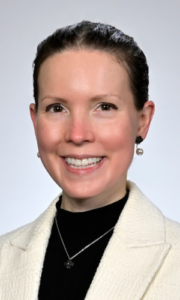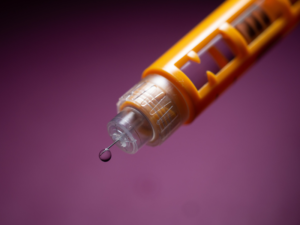Advanced practice provider (APP) utilization was inversely associated with high levels of burnout in hematologist and oncologists in community oncology settings, according to survey results published in the journal Blood Advances. The finding led the authors to recommend an expansion of APPs in community hematology and oncology practices to reduce burnout and dissatisfaction and support work life integration among practice hematologist and oncologists.
The survey was conducted by the American Society of Hematology (ASH) Recruitment and Retention Working Group and the Fitzhugh Mullan Institute for Health Workforce Equity at GW (George Washington) University in 2019—prior to the COVID-19 pandemic. It measured burnout using a validated, single-item burnout instrument from the Physician Work-Life Study, while satisfaction was assessed in several domains using a 5-point Likert scale.
Respondents
The overall survey response rate was 25.2% (n = 631). Of 411 respondents with complete responses in the final analysis, 36.7% (n = 151) were from academic practices and 63.3% (n = 260) from community practices; 29.0% (n = 119) were female.
The study did not examine levels of burnout among APPs working in hematology or oncology practices.
The survey included 27 multiple-choice and open-ended questions about practice activities, practice satisfaction, participation in medical education and mentoring, compensation, practice setting, and practitioner demographics.
Collaboration with APPs was measured by asking how frequently APPs provided services in their practices across 7 types of tasks (see Table 1). The authors used responses across all 7 domains to create a single dichotomous variable called “often work with APPs,” indicating that respondents worked with APPs “often” in ≥1 task.
| Table 1. APP Activities Surveyed in Hematology and Oncology Practices |
| New patient consultations |
| Hospital rounds |
| Manage own patient panel |
| Order chemotherapy |
| Manage palliative care |
| Perform invasive procedures (eg, bone marrow biopsies, lumbar punctures) |
| Take night or weekend call |
Results
More than one-third of the respondents (36.5%; n=150) reported burnout, while 12.0% (n = 50) reported a high level of burnout. Rates of burnout and high level of burnout were similar among academic and community-based respondents (overall burnout, 35.1% vs 37.3%, respectively; high burnout, 7.3% vs 13.8%, respectively; P = .59).
In weighted multivariate logistic regression models incorporating numerous variables, compensation plans based entirely on relative value unit (RVU) generation were significantly associated with high burnout among academic and community physicians, while the combination of RVU + salary compensation showed no significant association. Female gender was associated with high burnout among academic physicians.
Community Setting vs Academic Setting
Although academic physicians had greater utilization of APPs than community providers, the survey results found that such APP support did not significantly mitigate the risk of high burnout among academic providers.
| Table 2. Weighted Logistic Regression Models of Associations With High Burnout | |
| Working with APPs | OR, 0.40; 95% CI, 0.20-0.80 |
| Working with APPs in a community setting | OR, 0.28; 95% CI, 0.12-0.65 |
| Working with APPs in an academic setting | OR, 1.21; 95% CI, 0.18-8.12 |
Study co-author Ariela L. Marshall, MD, a classical hematologist at the University of Minnesota, in Minneapolis, MN, was a member of the ASH Recruitment and Retention Working Group. In an interview with The Oncology Connection, she pointed out that two times the number of respondents were from community practices so there was more power to detect differences in the community setting.

“One theory is that APPs and physicians collaborate in clinical care. In a community setting, the primary role of many providers is clinical care, whereas in the academic setting there is a lot more variation with physicians also involved in research, teaching, and mentoring,” Marshall said. “Some academic physicians are focused on clinical care, whereas others may see patients lest often and, as a result, have less opportunity to collaborate with APPs.”
The survey was not designed to detect how specific differences in practice patterns among academic physicians contributed to burnout, according to Marshall.
“I’ve observed that some physicians may see APPs as a ‘threat,’” that they are trying to take over our practice,” Marshall said. “I’m a big proponent of APPs in the medical workforce and of physicians and APPs working together in a team-based model. Everyone benefits when APPs are able to practice at the top of their scope of practice and physicians can focus on patients with conditions that require complex diagnostic workup or complex discussions about treatment planning.” She noted that there is a shortage of hematologists and oncologists and that in many parts of the United States, patients often wait 2 to 3 months or more for an appointment.
Marshall, who helped to develop one of the first APP hematology-focused fellowships in the country at Mayo Clinic in Rochester, MN, said it’s important to address burnout among physicians systemically and to not shift burnout from physicians to another part of the medical workforce.
Based on the study findings, Marshall said the ASH workgroup launched a national study last year to explore how APPs and physicians can best partner together.
For more information
Lee, A. I., Masselink, L. E., De Castro, L. M., Marshall, A. L., Connell, N. T., Dent, G. A., Fritz, J., Homer, M., Lucas, T. L., Naik, R. P., Nelson, M., O’Connell, C. L., Rajasekhar, A., Reynolds, R. J., Sharma, D., Smith, M., Weeks, L. D., & Erikson, C. E. (2023). Burnout in US hematologists and oncologists: impact of compensation models and advanced practice provider support. Blood advances, 7(13), 3058–3068.







